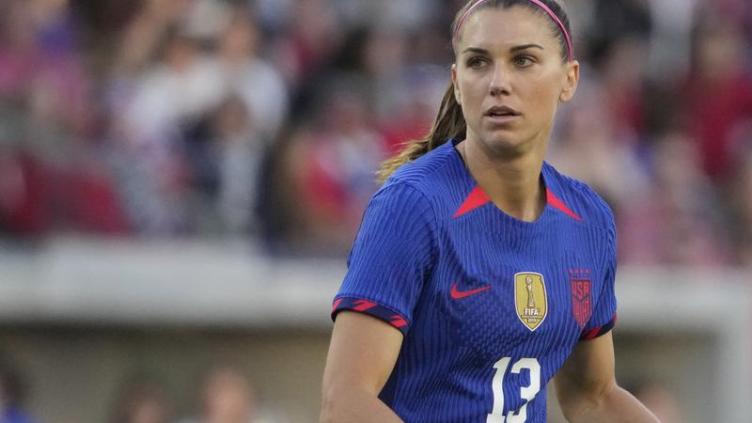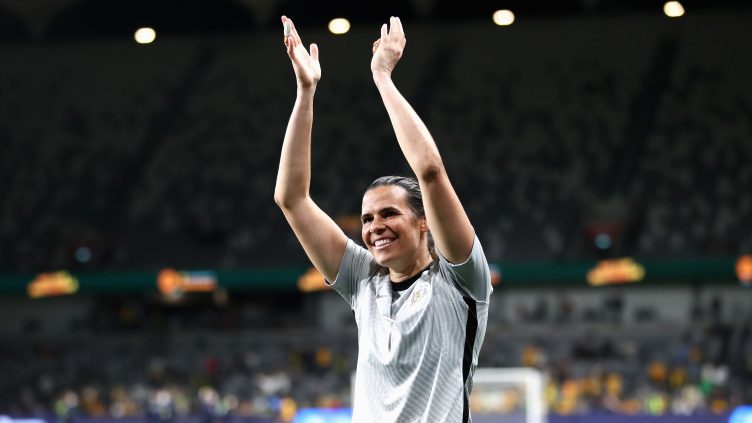FIFA Women’s World Cup favourites the United States will be powered by motherhood next month, with three senior players heading to Australia and New Zealand as first-time mums.
Alex Morgan, Julie Ertz and Crystal Dunn have been picked for the all-conquering American squad, giving birth since winning the 2019 tournament in France.
Morgan has a three-year-old daughter Charlie, Dunn had her son Marcel in May 2022, while Ertz – the wife of Arizona Cardinals NFL star Zach Ertz – gave birth to baby boy Madden last August.
Dunn said one-year-old Marcel would be travelling to New Zealand, fuelling her desire to win.
“My sweet baby boy, he will be there … hopefully all the way through to the very end,” she said.
“Being a mum is going to give me this new-found motivation and purpose for being on the field.
“Now I am playing for something bigger than myself. More than all that I represent, I’m representing being a mum. I think that is very cool and I’m excited for it.”
The Matildas should also boast a pair of mothers: Katrina Gorry and Tameka Yallop.
Gorry gave birth to daughter Harper in 2021 while Yallop’s partner Kirsty Yallop, a former NZ international, gave birth to their daughter Harley in 2020.
The US, who have won four of the eight Women’s World Cups, have a long tradition of mothers in their national team dating back to Joy Fawcett.
Fawcett combined her 17-year international career with growing her family, winning Olympic gold in 2004 with three children.
Kristine Lilly, Fawcett’s teammate for years, said US players had always supported the mothers in the setup.
“It’s great. It’s fabulous what the players can do and it just shows that women can play sports, have kids and continue to play,” she told AAP.
“You just manage it and you find ways to make it work. It’s a great example.”
Lilly, the most capped player of all time with 354 appearances in a US shirt, is in New Zealand this week as a FIFA Ambassador ahead of the World Cup.
She paused her career after the 2007 World Cup to give birth to her daughter Sidney.
“I remember telling my husband, ‘I’m not done yet.’ He said, ‘well, that’s fine’,” she said.
“As soon as I able to start training after, I was training. I wasn’t quite ready to hang it up.”
Lilly returned to the team but didn’t play at a major tournament as a mother after falling pregnant a second time as the 2011 World Cup loomed.
“I had just turned 40 when I had my second child and I was just a little bit more tired,” she said.
“I was like, ‘Oh shoot, this is a little bit harder than I think I can push through.’ I was in a good place to be done.”
It is not the first time that the US has taken three mothers for a World Cup, with Christie Rampone, Shannon Boxx and Amy Rodriguez picked for the 2015 tournament in Canada.
However, it is the first time the Mum Squad is expected to play such an integral role.
The 2015 trio combined for just one start, but the mums of 2023 all started in the 2019 final and shape as key players once again as the US chases its three-peat.
In an interview last month, Morgan said there were five mothers in the extended American setup, claiming a world-best.
“We have a record number of moms in camp right now … this has never happened with any national team,” she told the Guardian.
“No national team has supported moms in the way that US Soccer does right now. And that is something that we have worked incredibly hard for.”
In February, Morgan scored her 14th goal since her comeback, making her highest scoring mother in US history.
“It’s super inspiring,” team-mate Mallory Swanson said.
“I looked up to her before she had Charlie … even after, just seeing her as a mother and what motherhood brings, you can see it, she’s like a completely different person.
“She’s a great mom, but on the field she’s still able to do what she has always done and score goals and basically be Alex Morgan.”
Lilly said national federations were crucial to enable mothers to continue to play at the highest level.
“Support has definitely grown, from salaries to all different types of support, the fields they play on, their travel,” she said.
“That’s definitely a huge part of the growth of the game.”




